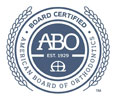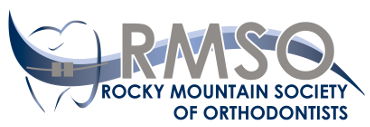Braces & Orthopedic Appliances
Braces are fixed appliance (brackets) that attach directly to the surfaces of your teeth. They have specific slots that wires can fit; these wires can straighten crooked teeth in your mouth. Braces can be metal or clear. Metal braces are smaller and will work faster then any other appliance, clear braces are larger but they are clear making the braces almost invisible. Clear braces take a little more time to correct teeth. The new ”sapphire” clear brackets will not stain and will remain clear throughout treatment.
Headgear is an adjunctive appliance, used in conjunction with braces and/or expander to move bones of the face or shift teeth with more force than what normal braces can provide. More importantly, headgears use extra-oral anchorage to move teeth and bone so that there is no reactive force on other teeth. Headgears can create forces that guides the growth of the face and jaws. Today, headgear are usually reserved for correcting underbites in children.
Removable appliances do not attach or bond to the teeth; they are held in the mouth by muscles or attachments/clasps on the appliances. Removable appliances are normally reserved to retain teeth but they can be employed to make small corrections or even to passively shift the jaw.
Retainers help to keep your teeth in its new place until your gums, bones and muscles adjust to the new teeth positions.
Frankel II Orthopedic Appliance is an orthopedic appliance that is used to create more space for permanent teeth to come up by enlarging the arches. It helps the lower jaw to align with the upper and lower teeth.
An expander is used to widen the upper jaw, create a larger arch which can correct crossbites and relieve crowding of teeth, present and future. Expanders will also open airways and can be designed to de-program shifts in the jaw. Expanders are best used on children 6 to 9 but can be effective into the late teens. After 18, the upper jaw is fused and may require surgery to expand.
Traction therapy is the correction of early underbites due to upper jaw under-development (maxillary hypoplasia); it entails use if a bonded expander along with a face-mask style headgear.
Invisalign is a dental treatment for correcting mild crowding/spacing that does not require movement of the roots. Today there are over 20 clear aligner choices other than Invisalign but all have the same limitations (and all are regularly abused by practitioners that attempt to make bigger corrections and ignore the inherent limitations).
Active retainer helps to align the teeth by providing pressure to particular areas of each tooth.





